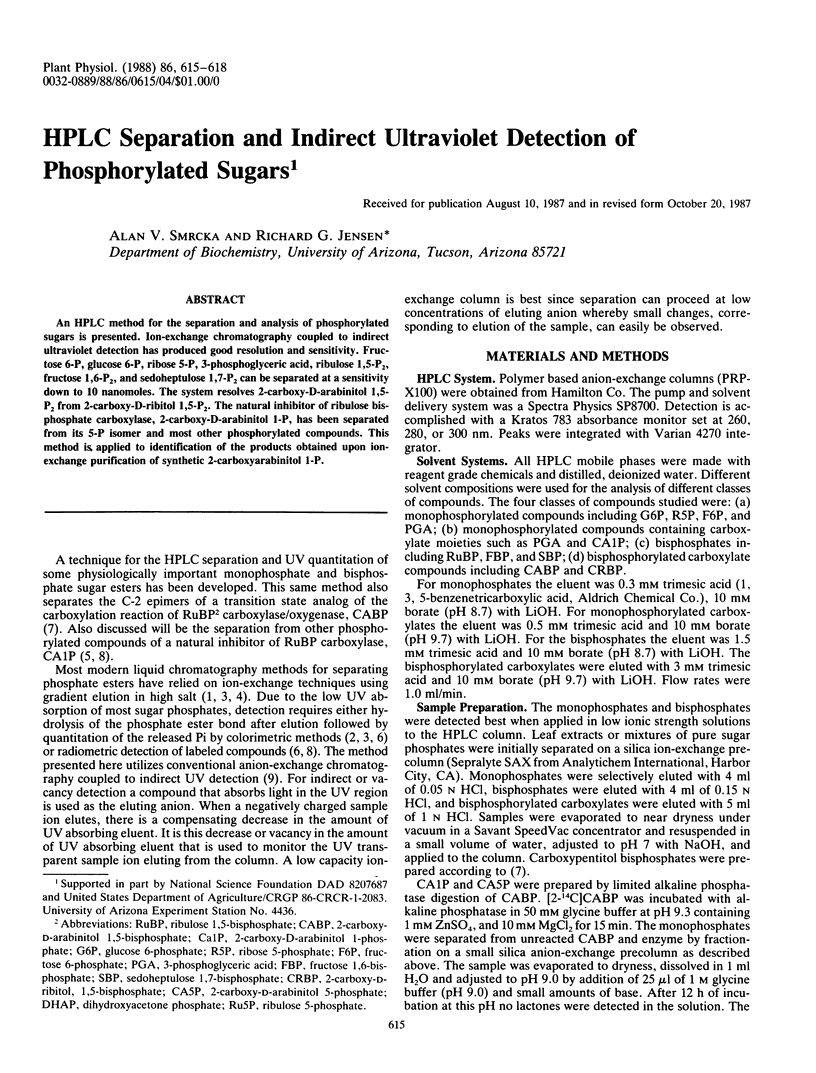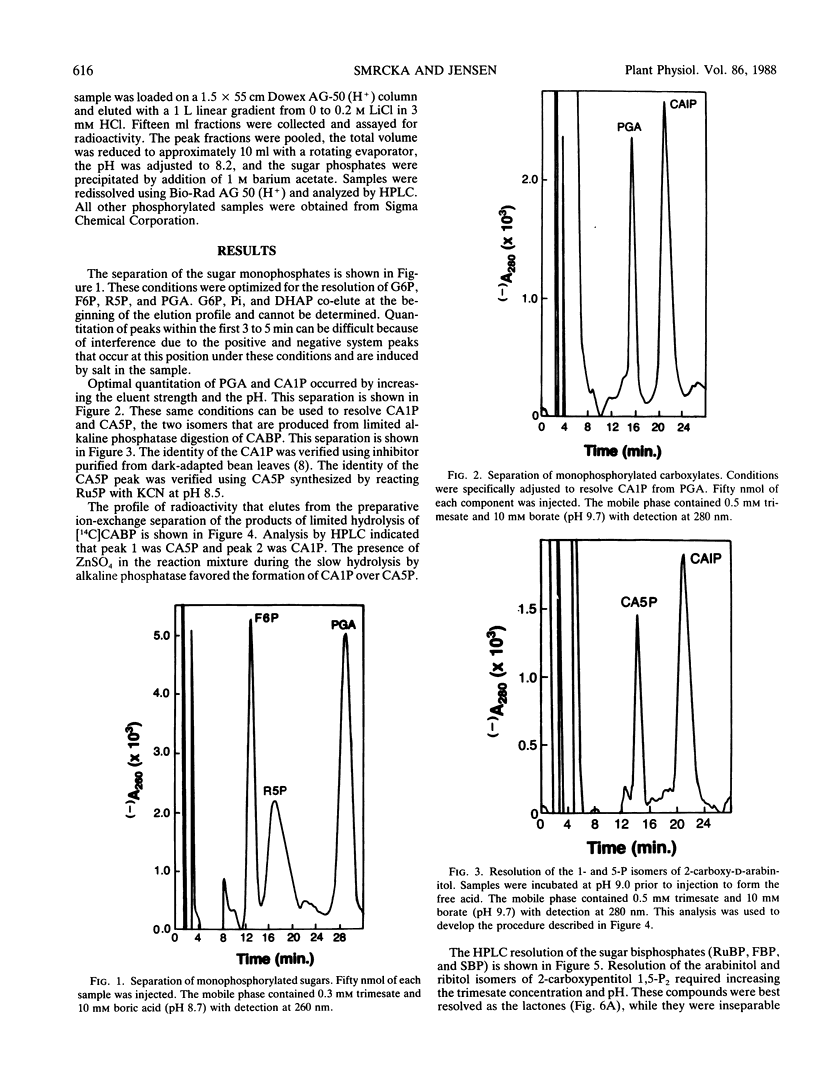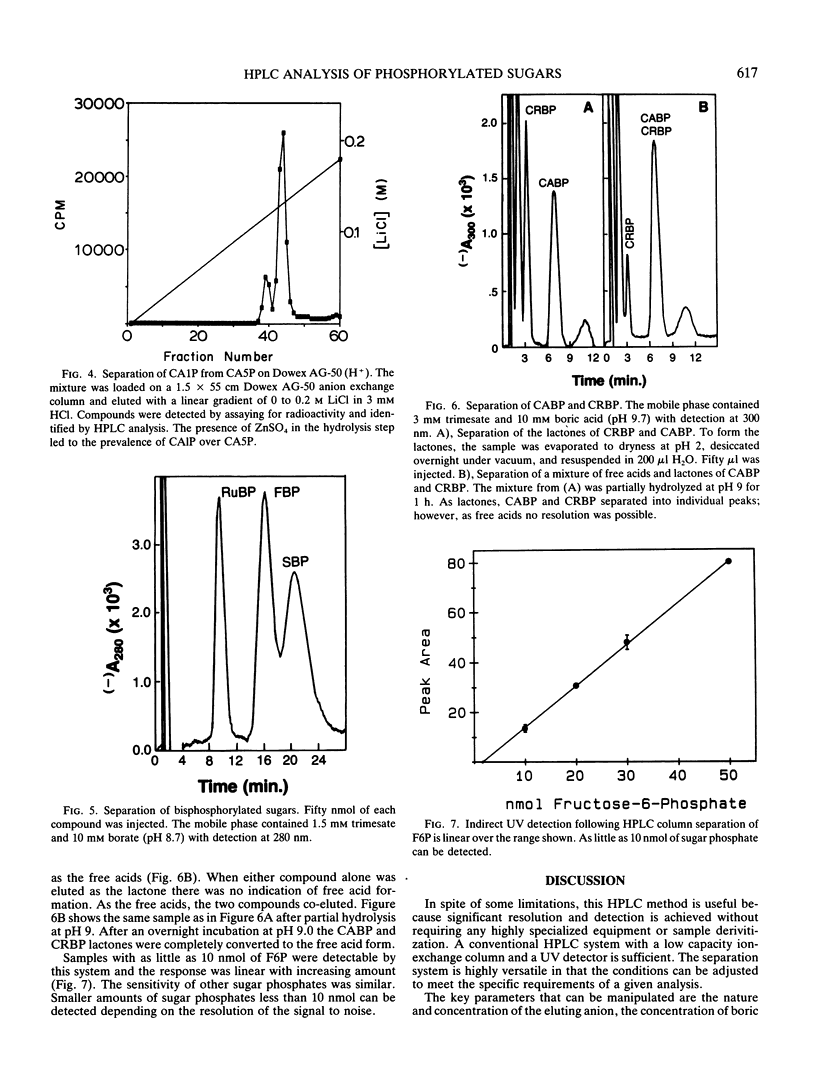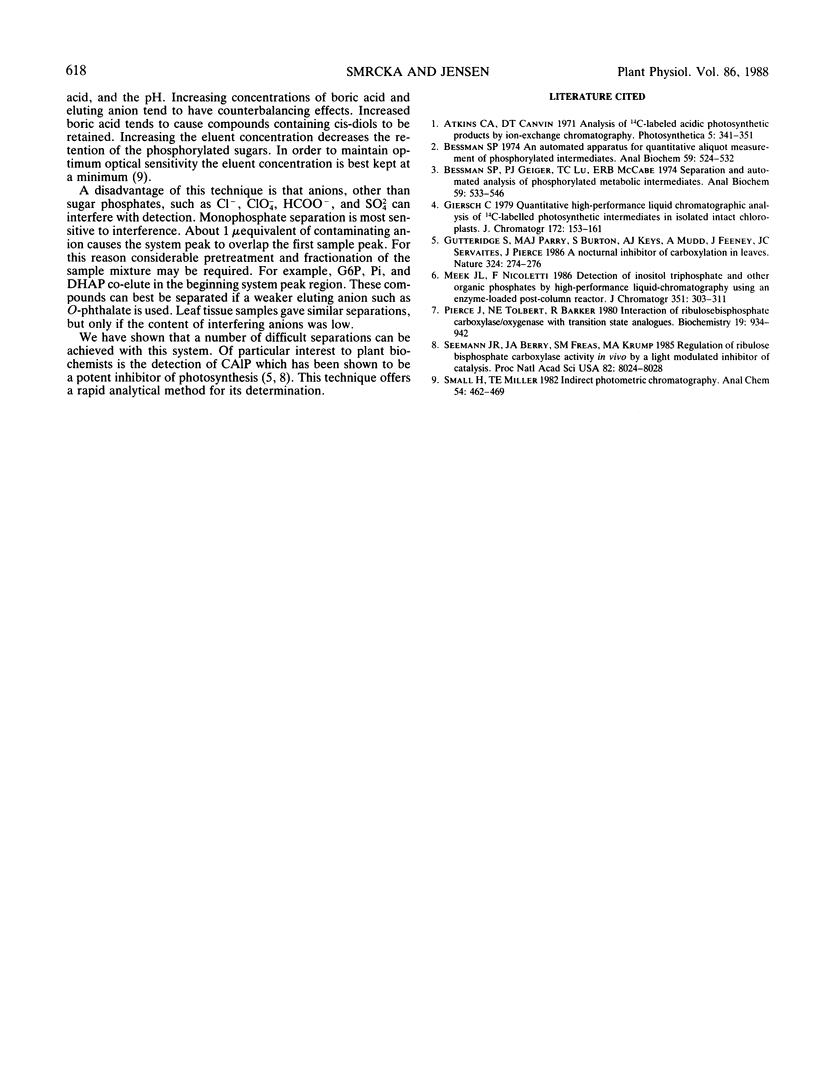Abstract
An HPLC method for the separation and analysis of phosphorylated sugars is presented. Ion-exchange chromatography coupled to indirect ultraviolet detection has produced good resolution and sensitivity. Fructose 6-P, glucose 6-P, ribose 5-P, 3-phosphoglyceric acid, ribulose 1,5-P2, fructose 1,6-P2, and sedoheptulose 1,7-P2 can be separated at a sensitivity down to 10 nanomoles. The system resolves 2-carboxy-D-arabinitol 1,5-P2 from 2-carboxy-D-ribitol 1,5-P2. The natural inhibitor of ribulose bisphosphate carboxylase, 2-carboxy-D-arabinitol 1-P, has been separated from its 5-P isomer and most other phosphorylated compounds. This method is applied to identification of the products obtained upon ion-exchange purification of synthetic 2-carboxyarabinitol 1-P.
Full text
PDF



Selected References
These references are in PubMed. This may not be the complete list of references from this article.
- Bessman S. P. An automated apparatus for quantitative aliquot measurement of phosphorylated intermediates. Anal Biochem. 1974 Jun;59(2):524–532. doi: 10.1016/0003-2697(74)90306-6. [DOI] [PubMed] [Google Scholar]
- Bessman S. P., Geiger P. J., Lu T. C., McCabe E. R. Separation and automated analysis of phosphorylated metabolic intermediates. Anal Biochem. 1974 Jun;59(2):533–546. doi: 10.1016/0003-2697(74)90307-8. [DOI] [PubMed] [Google Scholar]
- Pierce J., Tolbert N. E., Barker R. Interaction of ribulosebisphosphate carboxylase/oxygenase with transition-state analogues. Biochemistry. 1980 Mar 4;19(5):934–942. doi: 10.1021/bi00546a018. [DOI] [PubMed] [Google Scholar]
- Seemann J. R., Berry J. A., Freas S. M., Krump M. A. Regulation of ribulose bisphosphate carboxylase activity in vivo by a light-modulated inhibitor of catalysis. Proc Natl Acad Sci U S A. 1985 Dec;82(23):8024–8028. doi: 10.1073/pnas.82.23.8024. [DOI] [PMC free article] [PubMed] [Google Scholar]


